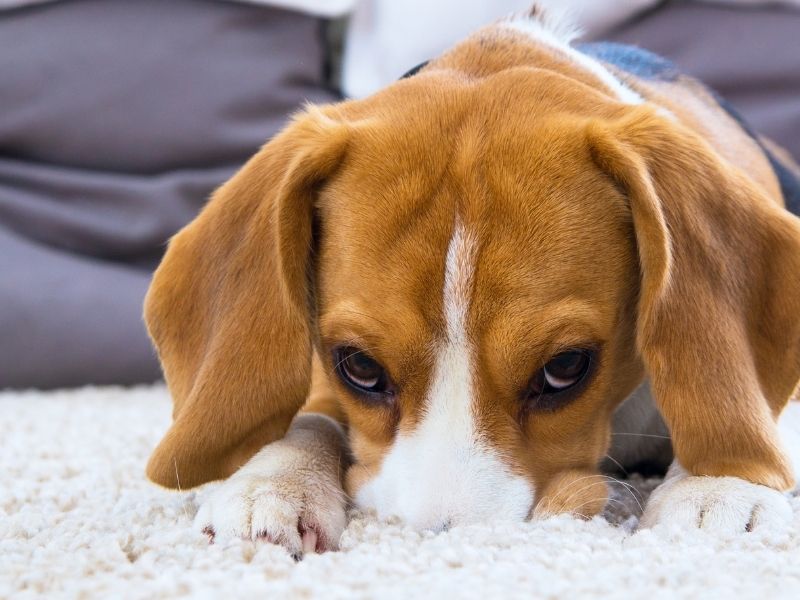
How to Stop a Dog from Marking in the House for Good
This post may include affiliate links. Please read my disclosure policy.
Urine marking is a common behavior, particularly in male dogs. Dogs mark with their urine to assert ownership of objects and areas, leaving a scent message for other dogs. Female dogs mark with their urine too, especially during their heat cycle. This natural behavior is a way for dogs to communicate and establish social hierarchy.
What’s the Difference Between Peeing and Marking?
Your dog may pee inside if they haven’t been let out enough, if they have a small bladder, or for many other reasons. But the peeing will result in a full puddle of urine.
Whereas, in marking, you’ll only find a small amount of urine, and it’s often found on the same spot or object.

It’s considered natural behavior when dogs mark a certain spot, but it’s certainly not acceptable in the house. Furniture, floors, walls, and other items are ruined or damaged when your dog decides to claim them as his own.
Urine marking is not the result of faulty housebreaking. In fact, most of the time, urine marking can be curbed with behavior modification.
Why Is Your Dog Marking in Your House?
One of the most common reasons dogs start urine marking inside your home is the addition of anything or anyone new, be it a new dog or cat, a baby, a new partner, or even new furniture. This behavior can be particularly prevalent in multi-dog households where there’s competition for resources, attention, or status. By territory marking, a dog is basically saying, “This is my space. Keep out.”
Other triggers may be stress, like moving to a new home or even a change in your and your pup’s routine. Certain forms of anxiety, like separation anxiety, can also cause this behavior. Dogs urine mark as a coping mechanism, providing them with a sense of security and familiarity in response to perceived threats or changes.
If your dog urinates more frequently in your home, this may also indicate underlying health issues. Certain diseases may result in increased urination, which can be misconstrued as marking behavior.
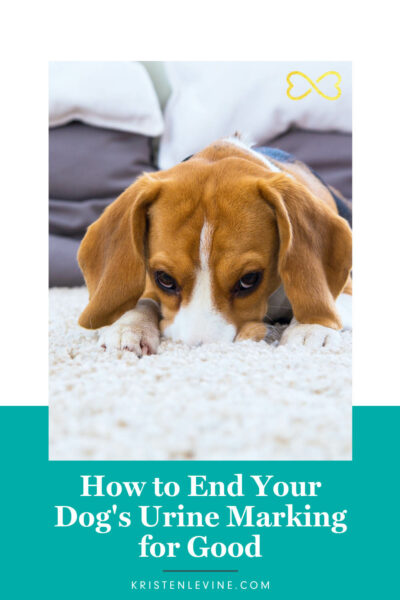
How to Stop Dog Marking in the House
Spay or Neuter Your Dog
For both female dogs and male dogs, spaying or neutering will reduce or stop marking behavior. According to the North American Veterinary Community, as many as 50% of male dogs stop scent marking, or at least do it significantly less often, after being neutered.
Intact male dogs usually begin marking when they start to reach sexual maturity.
If you have a puppy, neutering him as soon as he’s old enough is one of the best ways to stop indoor marking from starting in the first place.
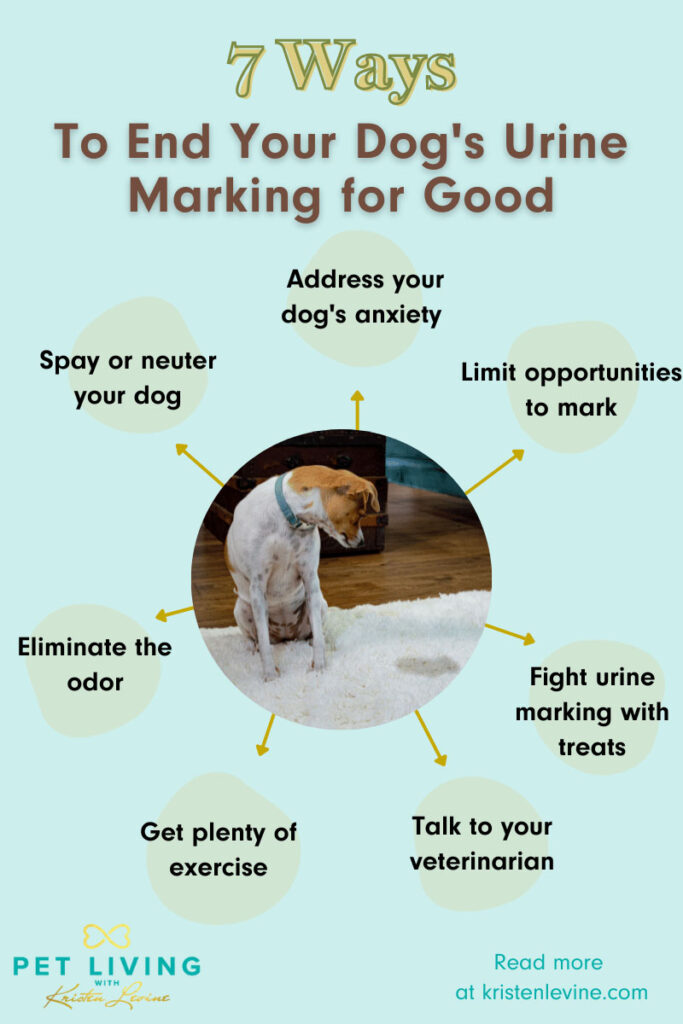
However, it may be days or even weeks for the urine marking behavior to stop after your dog is altered since hormones gradually decline rather than come to a screeching halt.
And it will likely also take some additional house training on your part to change the marking behavior if it has become a deeply ingrained habit.
If your male dog is peeing in the house weeks or months after he’s altered and after you’ve taken the steps below, there could be other behavioral or physical issues that need to be addressed.
Address Your Dog’s Anxiety
If your dog’s marking is caused by something like separation anxiety, you’ll want to address it sooner than later, especially since anxiety can escalate as your dog ages.
This is one reason why it’s important not to yell at your dog when he marks. If he’s doing it out of anxiety, yelling may make it much worse.
Some dogs experience noise anxiety, social anxiety, or separation anxiety. These fears can make a dog react with unwanted behaviors, like urine marking.
There are several OTC (over-the-counter) anxiety tools that can help alleviate your pup’s anxiety. I love this pheromone collar from Adaptil.
My dog, Chilly, had severe anxieties, especially around loud noises, and this collar was a very effective tool we used to manage it. The pheromones have a calming effect on some dogs and can reduce the urge to mark. There is also a room diffuser if you prefer that.
There are also many food-based remedies for calming anxiety, including calming probiotics and calming foods.
Ultimately, if your dog has anxiety, you may need to enlist the help of a veterinary behaviorist to work through it. You can find a behaviorist in your area using this page on the dacvb.org site.
You can also check out my pet anxiety resource page for more information about anxiety signs and solutions.
Eliminate the Odor
As long as the odor from your dog’s urine is still there, he’ll likely continue to mark the same spot. So it’s important to clean it up correctly, with a bio-enzymatic cleaner designed to eliminate biological waste, like urine. Be sure to let these completely dry to eliminate all traces of organic matter.
An enzyme cleaner works by eating the bacteria that’s causing odor and stains. Ordinary household cleaners will do little to eliminate the mess. If you’re in doubt, take a black light to any mess you’ve cleaned without using a bio-enzymatic cleaner, and you’ll be convinced!
Kinderbean No-Stress Mess Eraser is, paws-down, the best cleaner for pet mess, in my opinion. I’ve tested a lot of cleaners, and most have come up short in one way or another.
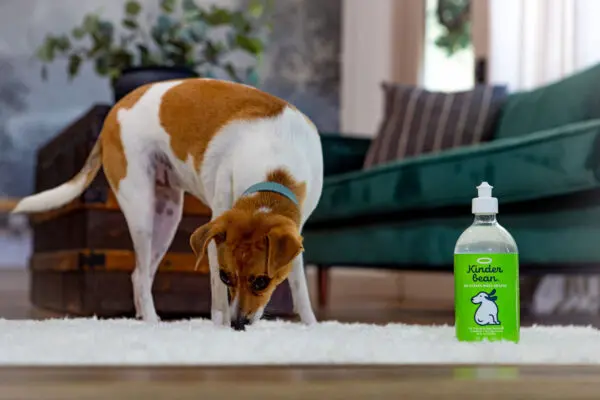
Whichever cleaner you choose, make sure it is:
- Bio-enzymatic
- Safe for pets (both in chemical composition and odor)
- Doesn’t contain harsh dyes that could discolor surfaces
- Contains natural ingredients
- Has a durable dispenser (many have cheap spray tops that break in shipping)
Once you have your cleaner, you need to use it properly to make sure it eliminates the odor.
- Soak up as much urine as possible with a paper towel.
- Saturate the spot with the cleaner. This is important so it can make contact with the urine and eat the bacteria.
- If the spot is horizontal, lay a clean cloth over the top and allow it to set overnight or 12–24 hours. If the spot is vertical, allow the cleaner to air dry.
- Retreat if necessary.
It’s a very simple process, but it’s so important not to simply “spray and wipe away.”
- Enzyme-Powered Cleaner: Simple ingredients, powered by plants. Powerful, bio-enzymatic formula biodegrades odor and stain molecules leaving nothing behind.
- Any Stain, Any Surface: Erases pee, poop, vomit, blood and scoot stains from all floor and furniture surfaces including carpets, upholstery, hard floors and more - even cleans leashes, collars and pet bedding.
- Easy to Use: In just three steps, this ready-to-use cleaning formula will erase messy stains and odors for good - no mixing, just shake and go.
- Safe for Pets & the Earth: Our non-toxic blend of safe probiotics and naturally occurring enzymes have no harsh chemicals, no scary additives, no residue and no possibility of harm to your family or pets.
- Created by a Pet Expert: Pet industry veteran and lifelong pet parent Kristen Levine created Kinderbean to make loving pets easier, messes and all.
Fight Urine Marking with Treats
Most dogs won’t pee where they eat. Change the meaning of the place he has marked by leaving treats directly on the spot after cleaning it.
Consistency is key here because as soon as you’ve banished one area as a pee spot, your dog may choose a new area. It may take weeks before your dog realizes the entire house is off-limits to territory marking. But this solution is usually permanent, so it’s worth the wait.
I like to use these treats because they’re low in calories and all-natural. When you’re dog training, you’ll go through a lot of treats, so you don’t want to give them full-size bones or cookies that will pack on unhealthy pounds.
Get Plenty of Exercise, Both in Body and Mind
Breeds known for their high energy or above-normal intelligence are in special need of exercise. Getting out that pent-up physical or mental energy can help calm your dog and avoid behavioral issues, such as marking.
If you’re already walking your dog and he’s still peeing indoors, you may need to step up your game and either walk him longer or take him for a run.
If running doesn’t get you paws-itively excited, try taking your dog to the park for a game of high-intensity fetch. One of my favorite fetch toys is the ChuckIt! Ring Chaser. It allows you to throw a ring-like toy long distances without tiring out your arm. Plus, it bounces and rolls in ways that are really enticing to our energetic pooches!
Brain stimulation is also important, so come up with creative games or tricks to teach your pet. Not only will it give your pup a purpose, it comes with the benefit of increased bonding time with you!
Exercise may seem like a very simple step, but it’s probably one of the most important!
Limit Opportunities to Mark
If your dog is a stubborn marker, you may need to take stricter measures to curb the behavior.
Some experts recommend the umbilical cord method. When your dog is inside, he’ll remain leashed to you so you can closely monitor him. As his behavior improves, you can gradually give him more freedom to explore the house.
I’ve tried this method to housebreak my dog, Tulip, and it works fantastically. I’ll caution, though, that you do need a lot of patience and consistency to see results.
When to See Your Veterinarian
In most cases, behavior modification is enough to curb your dog’s urine marking. However, in some cases, urine marking can be caused by medical issues.
Your dog may have begun marking because of a urinary tract infection, and the only way to know for sure is to visit your veterinarian.
If your dog has begun marking and there doesn’t seem to be any apparent trigger, it’s time to visit your veterinarian to rule out anything that needs treatment.
Additionally, if your dog has extreme anxiety that’s causing the urine marking, you may need to seek help from a veterinary behaviorist. They can help get your dog the relief he needs and recommend more ways and methods on how to stop a dog from marking in the house.
When Is Urine Marking Acceptable?
When you’re walking your pup, urine marking outdoors should be all right. If you’re in an area where marking would not be acceptable, perhaps like your neighbor’s beloved garden or flower bed, take note of any tell-tale signs that your dog is about to mark, like prolonged sniffing. Lead your pup away from the area by encouraging them to move along (use the voice that you know gets lots of wags) and offer treats if you have any on you.
The Tail End
If your dog is urine marking in the house, rest assured it’s not because he wasn’t house trained enough. Urine marking is a behavior, and with behavioral modification along with neutering your dog, you can stop marking for good.






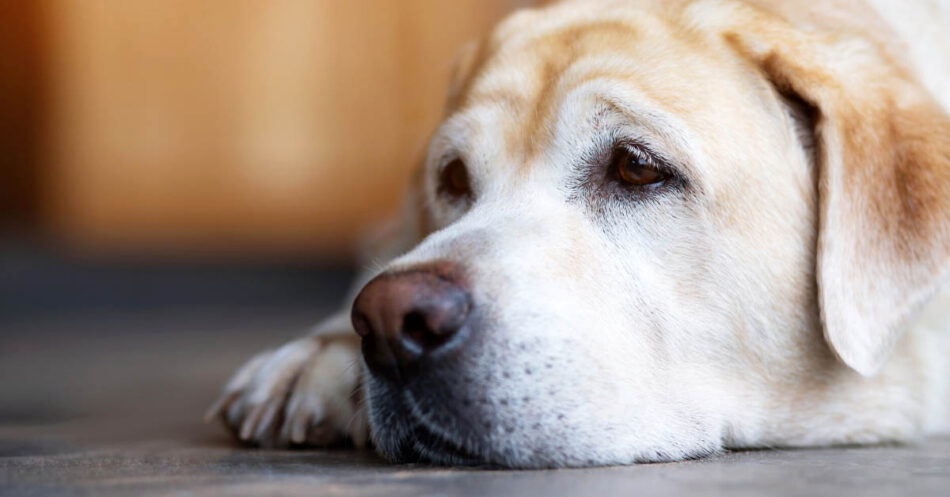
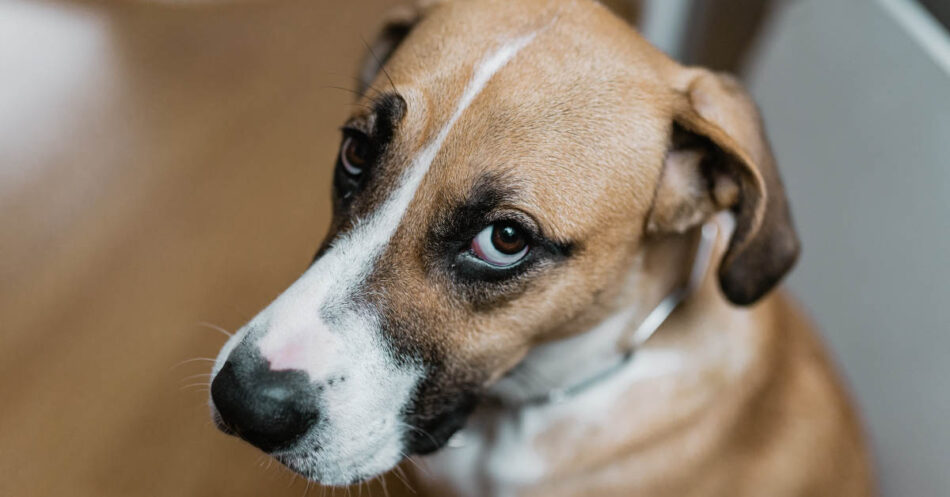
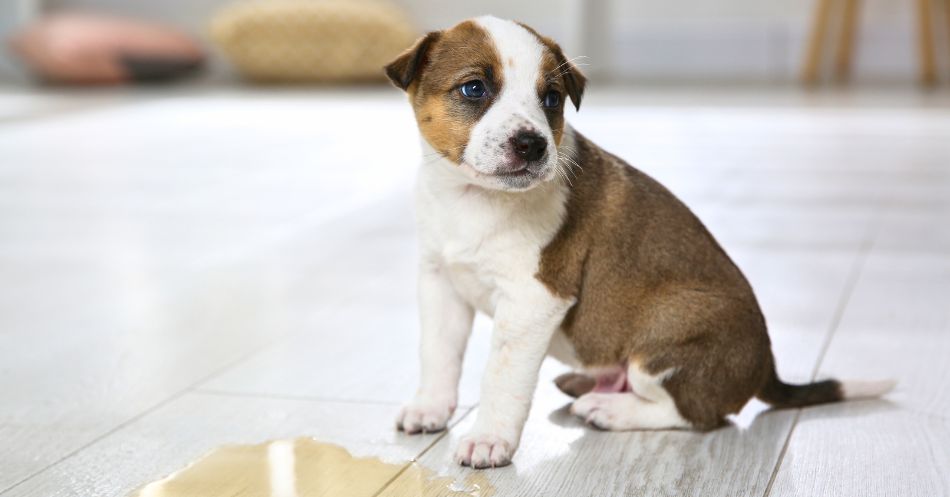
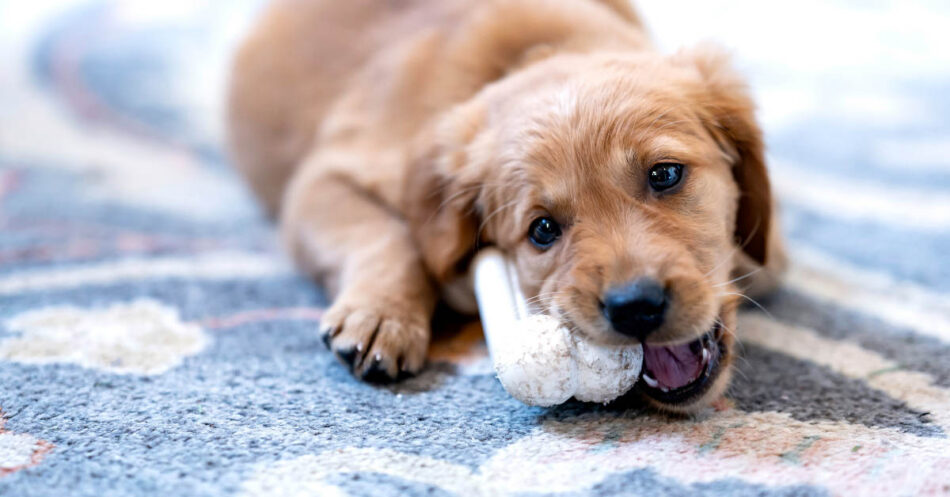
Hi! I have a 8 month old yorkie (male). He just started to mark his territory on the corners of doors mostly the one in the bathroom. He has never done this before. There isn’t anything new in my home nor any new people. I love with my sisters and parents. I don’t want to neuter him either.
Live **
Hi Jasmine. Neutering would be my first recommendation as it often will stop the marking behavior. If you don’t want to neuter him, take him to the vet to rule out any medical reason for his marking.
Also, try taking him outside more often to relieve himself. He may choose to do more of his marking outdoors. Another thing you can try is canine pheromones. Try getting some Adaptil — either the collar or the plug-ins. Adaptil naturally calms dogs and that might reduce (hopefully eliminate) the behavior.
We have a 4 yr old nuetered yorkie. He’s been super trustworthy in our house. We got a female yorkie pup who is now 7 months old. She is not spayed yet. Our male has now started to mark or pee in our house. I put a belly band on him and he even urinated in that. I’m going to have his urine checked as soon as the vet is opened but what could be causing this behaviour. The two dogs get along really well and we’ve always seen that the 4 yr old is first with everything. HELP
Hi Mari,
Can you have the female spayed soon? That could help. Your male is marking his territory (in your house – so frustrating) and getting her fixed “may” lessen his marking. Definitely have him checked out at the vet to make sure there’s no underlying medical problem causing the behavior. You might also try canine pheromones — try Adaptil. This could calm him enough to eliminate the marking. You may just have to try a few things before you find what works. I’m wishing you luck! Keep me posted.
Kristen
I have 3 dogs. Kristina 8y.o., Amaria 1 y.o., and Hank 5y.o.. All of them fixed. Amaria is coming along in training, however, since I could remember she pees and poos on my driveway. We have a huge yard and she randomly picks a day to pee n poo on my driveway! I pick it up and spray the enzymatic urine spray. I am so tired of it. So very tired of it. It only takes one moment that I’m not watching her for her to do it.
What do you recommend for me?
Hi Jack,
That does sound frustrating. For some reason, she prefers the flat surface. By any chance did she come from a shelter or kennel environment before you got her? I’m wondering if she used to have to relieve herself on a hard surface like a kennel or shelter floor. Regardless, she may just not like the feel of the grass. Try walking her on a leash in an area with short grass. Keep her on the grass until she goes potty, then praise her. Do this at least 3-5 times before allowing her to be off leash for potty time. See if that helps to transition her to the grass!
I have a 5 year old Pomeranian male. He is not neutered and likes to mark EVERYWHERE, especially on vertical surfaces like walls or sometimes even people. He wears a belly pad during the day and during the night we put him in a pen with a mat so he doesn’t have to wear his belly pad 24/7. The problem with him is that he knows where he’s supposed to poop and poops on his mat, but how can I get him to pee on the mat too? Since he’s an old dog and has made it his habit to pee everywhere, I’m aware it will be a hard journey. We are moving houses soon though which means a fresh start and he won’t have any scents there, but my concern is that since he DOESN’T have any scents there, he will only be more motivated to pee everywhere. Is it still possible to potty train him to pee on a mat or is it too late? 🙁 I don’t want him to spend his whole life wearing a belly pad especially since it is causing him to have rashes in his groin.
Hi Kaitlyn, Are you opposed to having him neutered? That would go a long way to helping the marking problem. It could eliminate it or make it less frequent. If not, I saw this funny Pop Up Firehydrant pad at a pet expo back in Feb. It has good reviews and many dogs take right to it.
When you move to your new house, I would start by crate training him at night and for an hour at a time during the day, about 2-3 times a day. When he gets out of the crate, you immediately take him outside where it’s okay to pee, mark, whatever. You can set up the pee pad in a single room that you want him to use and reward him when he uses that pad or goes outside. It’s possible he will mark less there if there are fewer smells, but the opposite could be true too. Try some of those recommendations and let me know how it goes! Kristen
Hello,
We rescued a 12 week old neutered male puppy last week in addition to our 1 1/2 year old female whose 100% potty trained. The first day our puppy was really good about going on the grass outside, making sure to hold his pee until we got out there (I believe his foster did some potty training work with him and his siblings). After the first day though he has begun going in the house and now almost refuses to go outside unless we sit out there with him for 20-30 minutes. He’s not peeing in the same spot and we are using an enzymatic cleaner to clean up the messes. We reward him when he does go outside, but it’s still not preventing him from marking inside a few minutes later.
Any suggestions? Thanks!
Hi Jessica, First, thank you for rescuing that puppy! You mentioned it was last week, so just know, it may take a few weeks to get him going outside consistently. I have a few suggestions — take him outside a LOT! First thing in the morning, right after any feeding time and every hour on the hour. Praise him each time he goes outside — make a big deal out of it! When he’s indoors, either confine him to a crate for an hour at a time, a few times a day. As soon as you let him out of the crate, take him out to potty. Another thing to try is to keep an eye on him to watch for any “looking for a place to go” when he’s inside. This is tough because you can’t watch him constantly. Some trainers suggest you put the puppy on a 6-10 foot leash inside and they can’t go any further away from you than that until they are going outside consistently. The idea is that if they’re on a leash inside the house (with you at the other end), you will definitely know when they have to go so you can take them outside immediately. Keep using the enzymatic cleaner, but be sure you are soaking the area thoroughly and allowing it to dry completely. Keep me posted!
Hello,
My boyfriend and I have two female dogs. They’re both spayed, they sleep together. One is 9 a mix breed of Shepard, huskey And rottie (which is mostly my dog, I’ve had her before the relationship) and the other is 4 (Huskey, whom was raised around my dog since she was a brand new pup). The 9 yr old is a rescue, I’ve had her since she was 2- never peed in the house before until this week.
Lately the 9 year old has been peeing all over the house. On the pet beds, in front of the 4 yr old dog bowl on the carpet, in the kitchen. She’s never had this problem before, it’s so sudden and I have to say I am certainly shocked by it. I have a backyard in which the dogs are constantly going outside and lounging. Within this past week shes peed almost everyday. Sometimes Directly after walks and sometimes not so much, in the middle of the night, after eating, just lounging and getting up to pee, after getting treats, the list goes on and on. I can’t help but think maybe it’s because we’ve both been home so much lately because of the virus and she’s not used to us being home so much or maybe she feels jealous of the 4yr old. Everytime I pet the 4 yr old or reward her for being Good I’ll give the 9 yr old a treat too so she doesn’t feel bad and directly afterwards she will pee. If the 4yr old is laying on the bed they share (ive tried separate beds, but the end up only using one and the 9yr old just pees on both beds anyway) She will get up and pee right in front of my face. I have all the cleaning products and I always thoroughly clean the area and the 9 yr old knows exactly what she’s done is not right because she always runs and hides. I don’t even need to say or do anything she will run outside or hide under a table. I’m not sure if it’s territorial, last trauma, the weather causes this or what. I’m looking forward to your response. Thank you for reading.
Hi Liz,
Gosh, that’s a frustrating situation. The fact that you say it’s rather sudden leads me to believe it’s either a medical issue (a urinary tract infection?) or could be due to the change in routine during quarantine. I suggest you take her to the vet to rule out any medical issues and to ask him/her about this odd, sudden behavior.
She may be stressed. If that’s the case, you can try a pheromone product like Adaptil or Thunderworks. This is a pheromone that mimics the natural pheromones a mother dog produces and emits when nursing her pups. So it has a calming effect on the dog. I would get a room diffuser for each of the rooms she spends time in and maybe one spray bottle that you can spray on her favorite areas (bed, wherever she hangs out).
But definitely rule out a medical issue first. I’m interested to hear how it goes. Good luck<3!
Kristen
i have two dogs, bot neutered and spayed, the boy is 3 and the girl is 5, recently the boy has been marking on the female when ever they go to the dog park or are on a walk. its never aggressive or anything and i cant seem to find a way to stop it.
Hi Tom,
You mentioned this is rather new behavior so I have two suggestions. First, I’d take your male pup to the vet to rule out any possible medical issues. Whenever behaviors change suddenly, we should first rule out a health issue.
Secondly, he probably wants to be sure other dogs know she belongs to him! LOL. He might just need to relax a bit. You might try getting him a pheromone collar. Adaptil makes a great one and I think Thunderworks makes one. Or, try some calming chews or CBD oil or chews. I’m using ones from TheAnxiousPet.com right now and I’m seeing great results in calming my dogs.
Let me know what happens. I’m rootimg for you!
Kristen
We have three Boston terriers. 1 female and 2 males. Everyone is spayed/neutered. The last few years the boys have started to mark..anything out of place(laundry baskets) anything new and even things like doors and drapes. It’s never when we are around. They sneak off to do it. We have baby gates up to keep them where we are but always seem to find an opportunity to find a way to mark. We have ruled out any medical issues. I am also cleaning up there messes with the special enzymatic cleaners. My husband is definitely the alpha male in the home and the dogs respect that. The boys get along fine. We keep putting belly bands on them but its not the long term solution I am looking for. My boys are marking things and its driving us crazy! We are about to move into a brand new home and I cannot have them marking.They don’t seem to be overly food motivated either. What do we do?!
Hi Shell,
It sounds like you are doing everything right as a pet parent. I know the marking behavior is super frustrating. When spayed or neutered dogs mark, it’s often a result of an anxiety issue. Or territory, or both. You might experiment with some calming products like supplements, CBC oil or chews, pheromones (I like Adaptil for dogs) to see if that reduces or eliminates the behavior. If that doesn’t work, talk to your veterinarian. He or she can rule out any medical issues and possibly prescribe a mild anti-anxiety medication that may stop the behavior. In the meantime, even though you keep a close eye on them, see if you can prevent them “sneaking off”. There’s also a “pee stake” by Simple Solution. You put it in your yard and it’s supposed to attract dogs to pee on it. Maybe if you have a few of those outside, they might start targeting those?
Keep me posted. I’m rooting for you!
Kristen
I have an 18 month old female blue heeler, that has started using the potty in the house. She is fully potty trained…or was. She is not spayed as her and my stud have been made to be a pair. We moved into our home in NOV. 2019, 2 weeks after we had a baby. The family make up was, my spouse, myself, our female spayed cat, our two unaltered heelers (male and female), unaltered 4 yr female Doberman and my 8 yr old spayed rottweiler. Two weeks after we moved in, the baby came home from the NICU (Thanksgiving). In mid-December, a dear friend and her 4 year old fixed male shepherd mix moved in. In Feb, accidents started happening. They were very infrequent at first and we thought that maybe it was our fault. I was at home all the time, she was still getting regular time with me/us, she loved the baby, we still all played together, etc. We’ve gotten to the point where she is going any time she is in the house. We have a 1/2 acre fenced yard that she can play in all day, but within 20 minutes of coming in, she is peeing on the floor. The dogs were kind of designated the sun porch to be their “room” it’s about 600sq ft. They have sheets, blankets, kennels, food, water, etc. I can’t think of anything that would have changed around the time that she started having this issue. Is she marking or am I missing something? I’m so confused and just at my wits end with having pee towels all the time and soaked bath mats. She is going in the sun porch, in the living room, in the sitting room and in our master bathroom. We’ve resorted to putting her in the kennel any time she’s inside, but I just hate doing that!
Hi Catin,
Oh gosh, that sounds so frustrating! Typically, when spayed females mark, it’s because of an anxiety issue. Even though you are around her all the time and she gets attention, you’ve had a lot of changes lately. That’s definitely enough to make her feel anxious. Is there a pattern to where she marks? Sometimes the pattern can leave clues. The good news is, there are a lot of all-natural anxiety relievers on the market today. You can try supplements, CBD oil, pheromone diffusers — you just have to experiment till you find what works. You can also talk to your veterinarian about her marking behavior. He or she may prescribe a mild anti-anxiety medication that might solve the problem. Check out my pet anxiety resources.
Keep me posted!
Kristen
I have a three old neutered Boston terrier. I put a belly band on and limit water at night. He won’t stop marking everywhere in the house. I’ve gone through the processes of dominating him and he respects that. There are no other animals and my children are part time with me. I’ve tried it all. HELP! I was told by a vet tech the only two things ate to live with it or re home him. Both not options.
Hi Brian,
Oh no! That is really frustrating. Boston Terriers are smaller breeds and need to go outside more often. It is possible he isn’t going out enough times throughout the day. For puppies that are 8-12 weeks old or dogs under 8 lbs, take a trip outside about once per hour. For older puppies and larger breed puppies, aim for at least every two hours.
Additionally, do you use an enzyme cleaner? This is key in getting the urine scent out. If he can’t smell his urine, he will be less likely to keep marking there. I love this one from Kinderbean.
Is he neutered? This is always my first recommendation since un-neutered males are more likely to mark. Neutering him can often solve the issue.
Hope this helps!
Kristen
Any tips to stop a neutered male cat from marking?
Hi Sarah,
Yes, I have a great resource for you to read. See link below. It’s important to know that neutered cats are less likely to mark, but some still do. However, come cats mark because they are stressed about something. So, two tips for you. Try putting some Feliway room diffusers or use the room spray in the rooms he marks. Feliway is a pheromone product that mimics the natural pheromones a mother cat produces to calm her kittens. It has shown to be very effective in reducing anxiety in cats. See some helpful links below:
Feliway diffuser
Feliway room spray
Great article about how to stop a neutered cat from spraying
Hope this is helpful Sarah!
Kristen